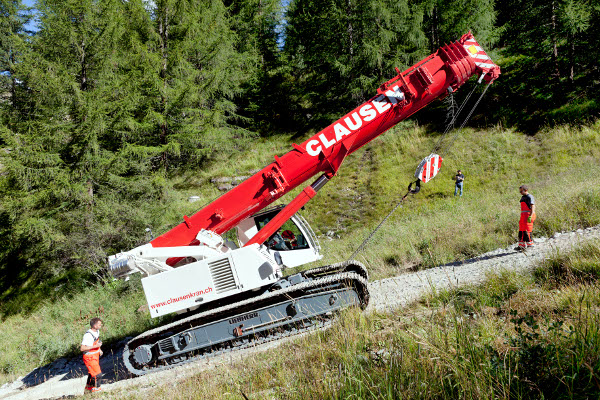Liebherr has introduced a new boom erection concept for crawler cranes, which allows an auxiliary crane to replace the majority of the assembly ballast. The new approach should work particularly well on wind farms, where large amounts of counterweights is needed just to raise the boom, and ballast trailers transport is difficult and expensive.
The German company developed the approach for its LR 1600/2 crawler cranes, for applications handling wind farm components that require long booms.
In a demonstration given by Liebherr at its Ehingen facility, the company showed how an LTR 1220 telecrawler can be used as derrick ballast.
The LTR 1220 replaced 280t of the 350t of derrick ballast required to erect and lower the SL10DFB main boom system, which had a 153m main boom and 12m fixed jib.
The remaining 70t of ballast plates are still required as suspended ballast for hoisting standard wind turbine components.
During erection and lowering, the auxiliary LTR 1220 was used as a counterweight, attached to the telescopic boom using an adapter. The crane and ballast plate are attached to the derrick jib using a cross bream with strap loops. The hook block of the LTR 1220, meanwhile, remains reeved, enabling it to be used for other tasks soon after erection is completed.
As well as reducing the amount of ballast — and ballast handling — required on site, the procedure also improves safety as the LTR 1220 can quickly provide ballast where required, if strong winds arise.
The demonstration was attended by more than 60 members of the industry who either operate an LR 1600/2 as part of their fleet, or work in the wind power sector.
Using a hoist with a load of 71t and a radius of 24m, Liebherr simulated the assembly of a wind turbine with a 150m tower.
The new concept is compatible with all long boom systems up to 156m long, on both Liebherr’s new SL10 and SL13 windfarm-focused boom systems, as well as the existing SL4 system.





